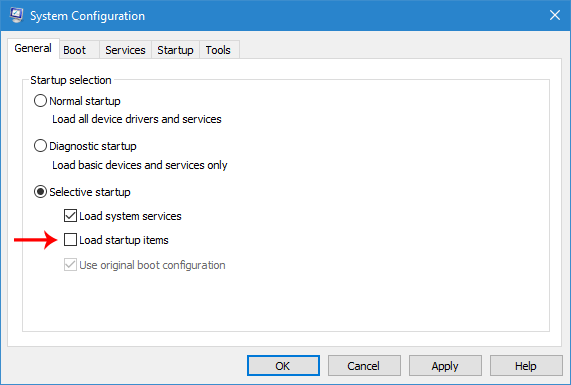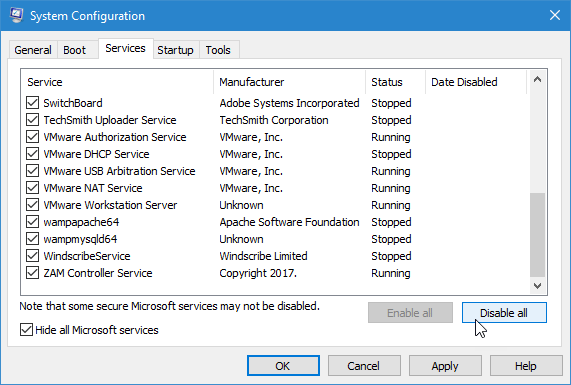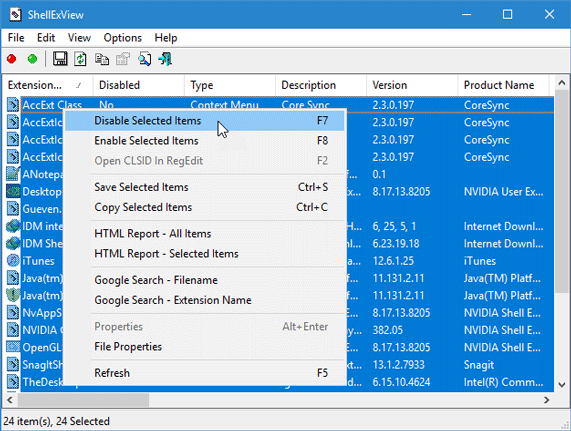Windows File Explorer is one of the most important elements of any Windows version as it helps users access different folders and files. Its right-click context menu offers several useful items that let you perform several useful operations. But at times, you may find that your Windows File Explorer crashes when you right-click to open its context menu or create a new folder. If you are facing this problem, here is what you need to do to troubleshoot the issue.
Before going forward, you should know that this issue mainly occurs when your programs add a lot of items to the right-click context menu. Poorly coded items that get added by third-party software or service may cause this problem.
Explorer crashes when I right-click
What you need to do first is to perform a Clean Boot. In Clean Boot State, it is easier to diagnose the problem.
Press Win + R, type msconfig and hit the Enter button. On the General tab, make sure the “Selective startup” option is chosen. Then, uncheck the “Load startup items” option.

After that, go to “Services” tab and check the option that says “Hide all Microsoft services.”

After that, select all the services and click on “Disable all.”Click Apply and then OK.
Your system will ask for a restart. Go ahead, and on a restart, you will find that your PC has booted in Clean Boot State.
Now open File Explorer and right-click and see. Does Explorer crash or not? If yes, then it is some system item that is causing the problem. If not then it is some non-Microsoft item that is the offender.
Now you need to identify it, and the only way to do it is by disabling one item after the other.
Reboot in normal mode and remember to undo the changes you made in msconfig.
Now download and open ShellExView, which is third-party software that allows users to scan for all the shell extensions that have been added to your right-click menu by third-party software.
You will see all the extensions, current status (disabled/enabled), type, description, product name (that has added the item), company, etc.
Shell extensions that are added by Microsoft generally do not create any problem. So you should hide them from the list. To do so, go to Options > Hide All Microsoft Extensions. Now you will see only the extensions added by third-party software.
Now, to select all and click the red button. Right-click on the items and opt for “Disable Selected Items.”

It will disable all the extensions at once. Now, you need to enable each one after the other and find out which of these creates the problem.
Once you find out the culprit, you need to keep it disabled or remove that item.
After this, restart your computer to check whether it is working fine or not.
See this post if Windows File Explorer crashes or freezes and this one if the Context Menu freezes or is slow to open.
I actually had this problem recently and it turned out that it was Classic Shell that was causing the problem. Reluctantly, I uninstalled Classic Shell and now my File Explorer works normally.
Hi, I too had this issue but can’t be without C Shell, I did try Khanse’s suggestion for using ShellExVie and found the extension that was creating the issue and kept use of C Shell.
Thank you Khanse, great article.
I got the simple solution……
I was suffering from this issue since last 3 days very much stressed and tried all sort of possible solution like playing with services and drivers but …………..
No solution in the end i just realized that past few days ago i turn on the QTTabbar toolbar on my desktop and then i just simply closed it and now all working fine. For confirmation of the issue i re switched it on and the problem starts back so its confirmed.
My suggestion for my fellow frnds is just that try to recatch the operation performed on the Windows OS desktop because this issue is only on desktop context menu.
stay hard and don’t lose or crush the laptop or try to reinstall OS because “solution gives you a massive experience”.
very very useful help….thanks a lot
THANK YOU – I was going to follow the tutorial but when I saw your comment I decided to try uninstalling Foxit first, you saved me a lot of time!
I am having this issue on a Win10-64-bit relatively new laptop.
But after the above steps and checking with ShellExView, it turns out it IS one of the internal services that causes the problem; or at least I have narrowed it down to it not being an external service that’s causing the problem.
How can I proceed to find the cause and fix it without causing damage to my system by shutting down all Microsoft services without knowledge of what they each do?
Extra Info:
The file explorer doesn’t crash on *every* right click, but after a few right clicks around the file-system it does indeed crash.
File.bat :
taskkill /f /im explorer.exe
start explorer.exe
Registry Editor :
HKEY_CLASSES_ROOTDesktopBackgroundShell
Ane Folder :
Text =
Kye Name : Default or MUIVerb
Icon =
Kye Name : icon
My problem was due the Spybot – Search & Destroy software recently installed in my Windows 10 Home Edition. This software did all what it wanted to do (I allowed it to do it) in my OS, because it blocks certain extensions of the original OS and some other imported when one installs software like WinZip, WinRar, etc. I had first go to the quarantine section of the program to undo all of its due and then uninstall the program. Problem solved. I´m Gonna be very careful next time. Hope this help anyone out there.
I didn’t feel like trying everything listed here, but I’m glad I found your comment! I also have Spybot but I don’t want to give it up, although it hasn’t happened before even if I had it installed. At least I have something to look into! Thank you.
I’ve followed the steps and it turns out that it’s an internal service that is causing the problem. How do I go about fixing that?